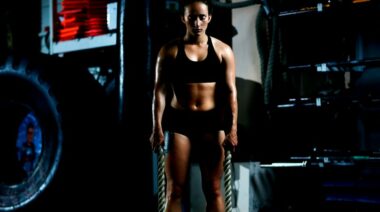Determining the best way to exercise for strength and size can be pretty maddening. Even the best – and perhaps especially the best – coaches ponder over exercise selection and intensity every day.
There may not be a best method for everyone, but being armed with more information is important to success. That’s what one of the latest studies in the Journal of Strength and Conditioning Research was about.
Study Design
The participants in the study were divided up first by size. This was done to ensure prior experience or existing mass difference couldn’t explain the results. Then the subjects were randomly assigned either to one of four different twelve-week experimental protocols that were focused on the quads or to a control group. The protocols were:
- CICE (Constant Intensity Constant Exercise): This protocol included only one level of intensity, in this case the eight-rep-max. Notice here that this intensity was relative to strength, so the actual weights used might change in time. Only the back squat exercise was used. This is similar to some simple powerlifting plans.
- CIVE (Constant Intensity Varied Exercise): The same intensity was used from the CICE protocol, but the deadlift, lunge, and leg press were added to the mix. The total sets for each week were the same as CICE (and all protocols) but divided between the exercises. This is similar to many bodybuilding routines.
- VICE (Varied Intensity Constant Exercise): Only the squat was used on this one, but the intensity ranged from six-rep-max to ten-rep-max. This is similar to many powerlifting programs like the Bulgarian protocol, although the intensities would be different.
- VIVE (Varied Intensity Varied Exercise): You guessed it, this one included squats, deadlifts, lunges, and leg presses from six-rep-max to ten-rep-max.
Results
At the end of the twelve weeks, every group got bigger. So all the methods are effective, which is something many people forget. However, the question here was which works the best, at least under these conditions. Although there were no significant differences, size was most pronounced in the constant intensity groups, which might indicate a trend toward better results in the long term.
The subjects who only performed squats didn’t develop the rectus femoris, and with constant intensity added (CICE) the vastus medialis didn’t grow significantly either. The vastus medialis did grow by about ten percent, but it didn’t reach statistical significance. This result lends support to traditional bodybuilding methods. Variety is needed to develop all the muscles evenly, and this is big proof of that.
Notice, however, that out of the four muscles of the quadriceps, only two grew significantly with the CICE group. That group used constant intensity and also experienced the greatest total size gains.
For strength, varied exercise won the day for these moderately trained participants. Keeping the intensity the same provided an even bigger boost, making CIVE the best group for improving maximal strength.
For size, do what’s the most fun for you because it all works, but vary up the exercises if you want more well-rounded musculature. Sticking with one rep range and using several big multijoint exercises appears to be the best for strength, and probably also in the long term.
References:
1. Fonseca, R.M., et. al., “Changes in exercises are more effective than in loading schemes to improve muscle strength,” Journal of Strength and Conditioning Research, DOI: 10.1519/JSC.0000000000000539
Photo courtesy of Strength Education.






